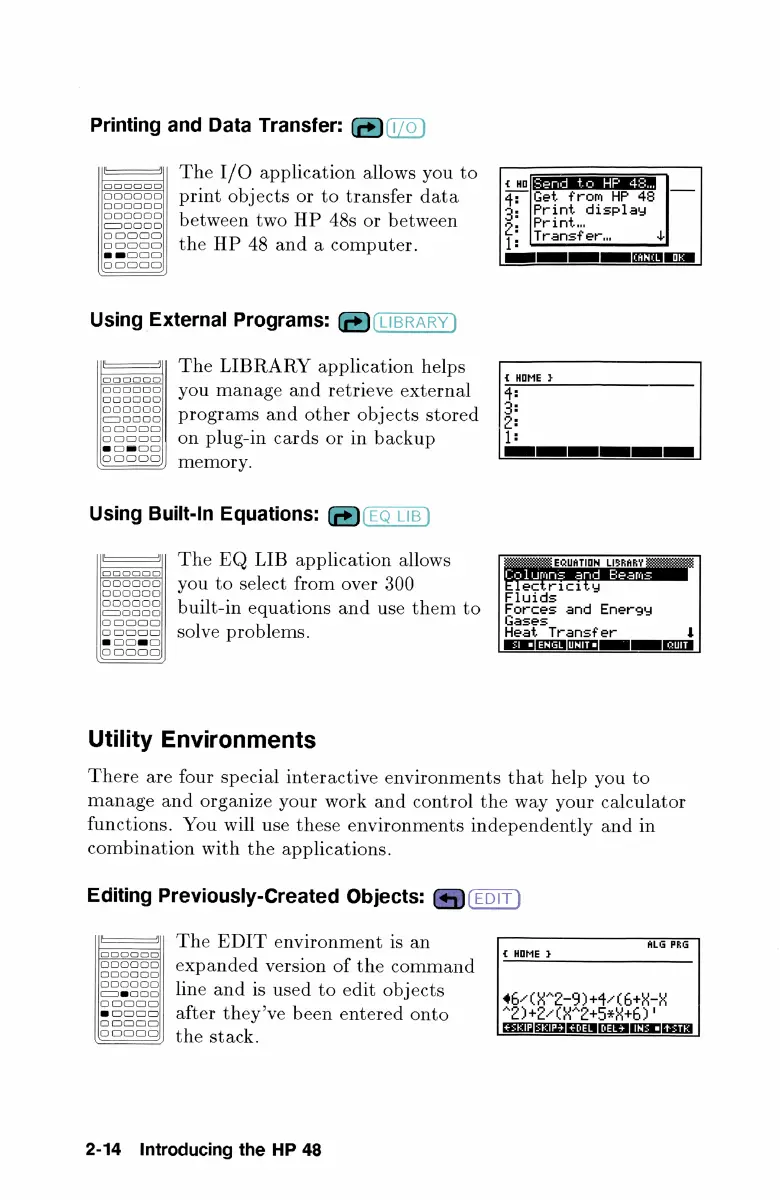

Do you have a question about the HP 48gx and is the answer not in the manual?
| Model | HP 48gx |
|---|---|
| Type | Graphing Calculator |
| Display Type | LCD |
| Display Size | 131x64 pixels |
| Memory | 128 KB RAM |
| Expandable Memory | Yes, via expansion cards |
| Release Year | 1993 |
| Processor | Saturn |
| Programming Language | RPL |
| Power Supply | 3x AAA batteries |
| Weight | 255 g (9 ounces) |
Guides users through initial calculator setup, including turning it on/off and adjusting display contrast.
Teaches arithmetic operations using both stack and algebraic methods, including the EquationWriter.
Explains the HP 48's memory organization, including SYSRAM, variables, and directories.
Guides users on how to create global variables by naming objects and storing them in user memory.
Teaches how to find numerical solutions for variables in equations using the SOLVE application.
Explains how to rearrange equations to isolate a specific variable symbolically.
Guides users on entering functions and setting parameters for plotting graphs on the HP 48.
Teaches how to find both numerical and symbolic derivatives of functions.
Demonstrates how to compute numerical and symbolic integrals with specified limits.
Covers entering and summarizing data, calculating mean and standard deviation for datasets.
Lists common error messages and their meanings, helping users diagnose issues.
Provides steps for undoing mistakes, system halts, and performing memory resets to resolve problems.